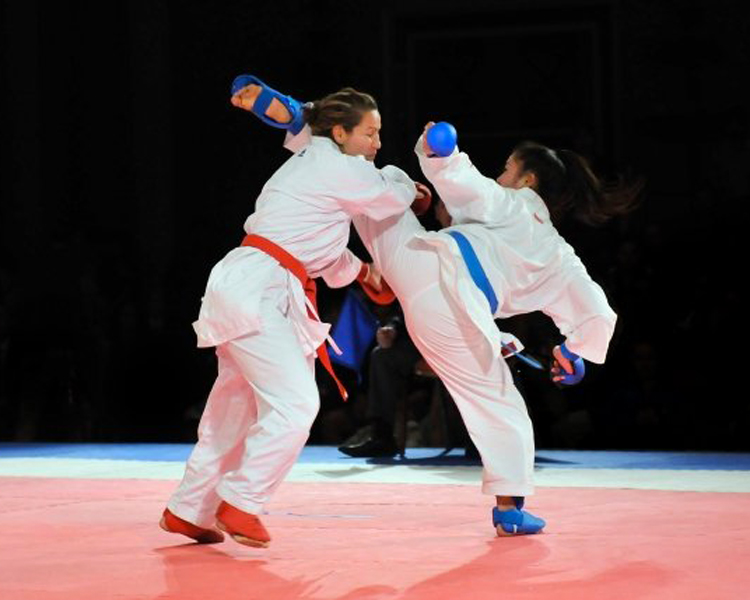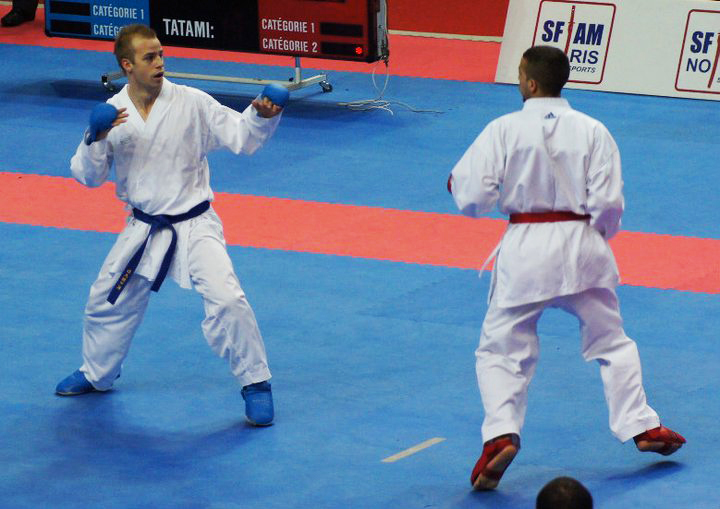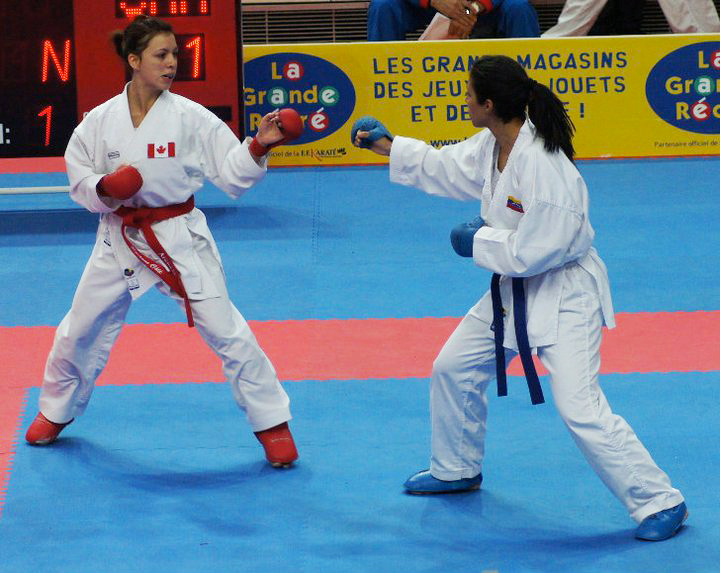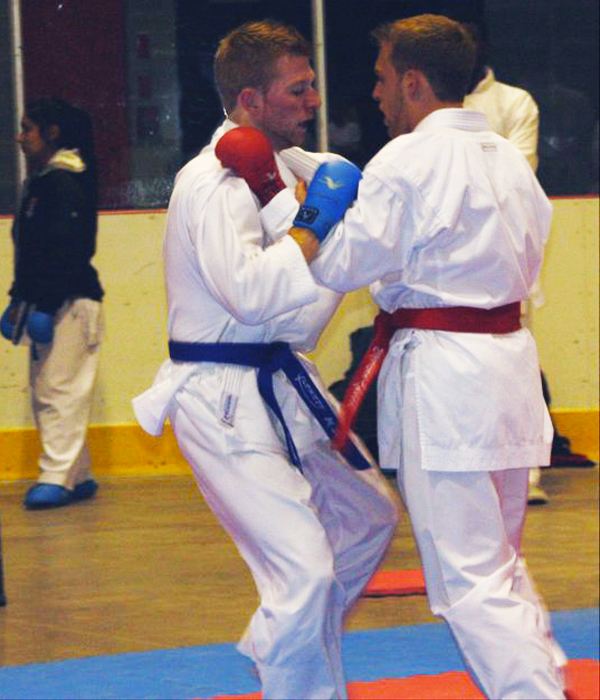It is very important to understand the concept of distance. We must not only understand it intellectually. During a fight, we must feel the distance deeply within ourselves.
Here are the 4 basic distances used in a fight:
- Large distance
- Intermediate distance
- Near distance
- Infighting
For learning purposes, the distances are categorized for the beginner, but with time, the experienced fighter must feel the different distances as a continuum. He must know how to change the distance with fluidity and how to use it to confuse the opponent.
Each distance has its role to play in fighting tactics and strategies. You must know the distance to prioritize in different situations of combat. Here is some information concerning each basic distance. During training, pay extra attention to the distance with which you are least comfortable.
Large distance :
- This is a safe distance
- Can be useful to avoid being scored in any particular situation (injury, loss of equipment,…)
- Allows you time to think
- Gives time to rethink your strategy
- Can give you a short physical and mental break
You cannot stay a very long time in this large distance, because you may receive a warning for refusing to fight. This distance should only be used as a mean of transition lasting a short period of time.
You can start preparing your attack at this distance. However, be careful not to initiate your technique from too far because the opponent will see you coming and will have more time to react and counter. If you are very fast and athletic, you will be able to attack from a long distance.
Intermediate distance :
- Distance used to prepare the attack
- At the limit of the opponent’s security zone
- Good distance to feint and change rhythm.
- Good distance to put mental and physical pressure on your opponent.
- Safer distance than a closer distance.
Near distance :
- You are in the opponent’s security zone (see fighter’s security zone).
- You need to be in the action and have good reactions. You cannot be passive in this short distance. If you hesitate, you will lose.
- In this distance, you need to fight with your instinct. You will be too slow if you use your intellect.
Infighting :
- This situation can be unexpected or provoked.
- Try to take advantage of the situation. You can push and hit or sweep. Don’t be passive.
- In that distance, do not lose energy unnecessarily. Consider your physical components compared to those of your opponent.
The closer you are to your opponent, the more your vigilance must be intense and sustained
The distance according to the techniques
It is important to adjust the distance to the techniques used. For example, kicking require intermediate distance rather than close, although this can be done, depending on the flexibility of the fighter.
 Picture: Courtesy of M. Dick Grant
Picture: Courtesy of M. Dick Grant
Attacks according to change in the distance
An effective fighter is able to adjust the length of his or her attacks based on distance variations during the combat. If an opponent backs up a lot in defense, the fighter will compensate by lengthening his or her techniques. Conversely, if the opponent remains more static during the attack, the fighter will adjust the distance accordingly.
Adaptability of the distance is a crucial element in combat.
The distance concept is closely related to the security zone of the fighter. This zone will dictate how the fighter will manage the distance during the fight (see fighter’s security zone).





 0
0